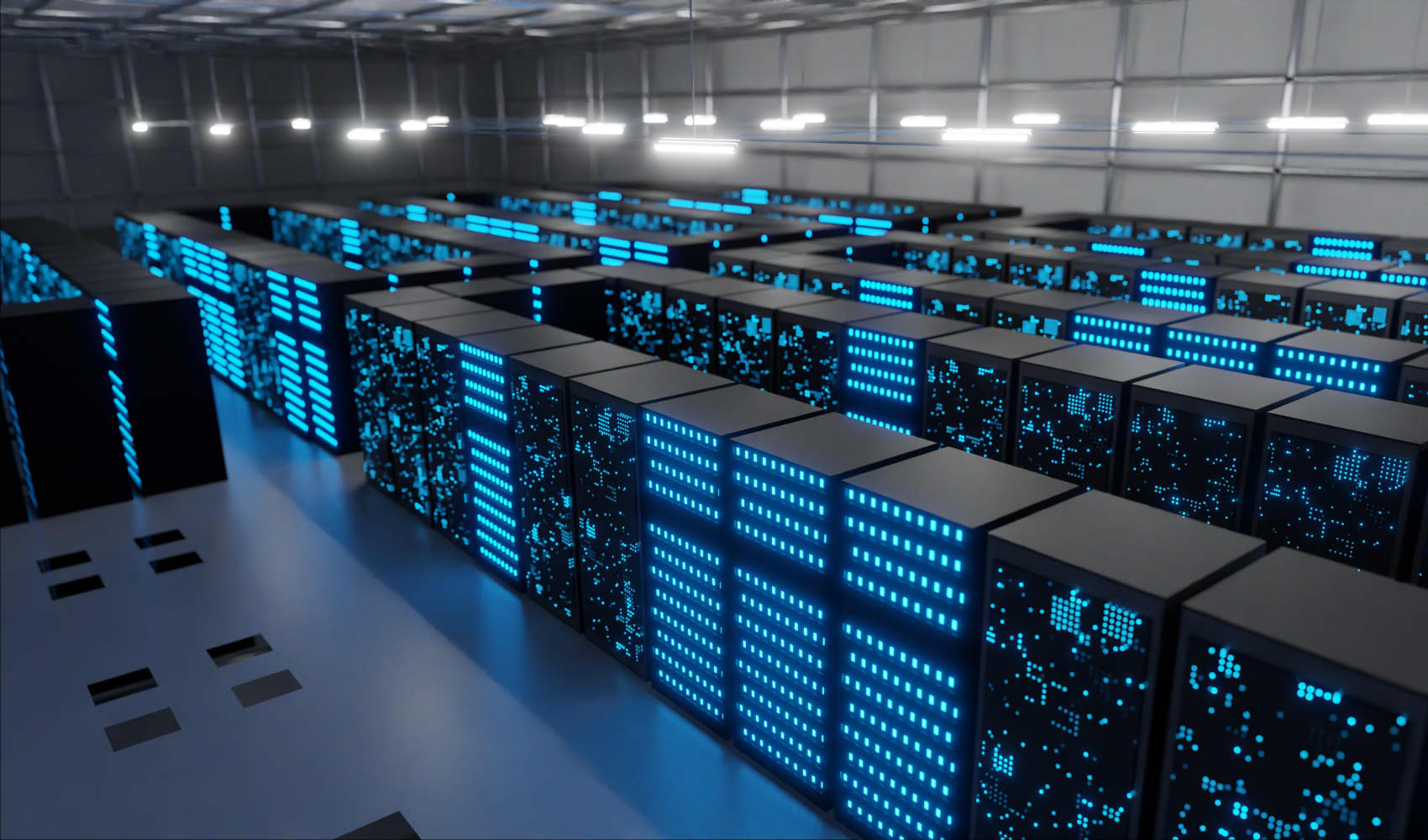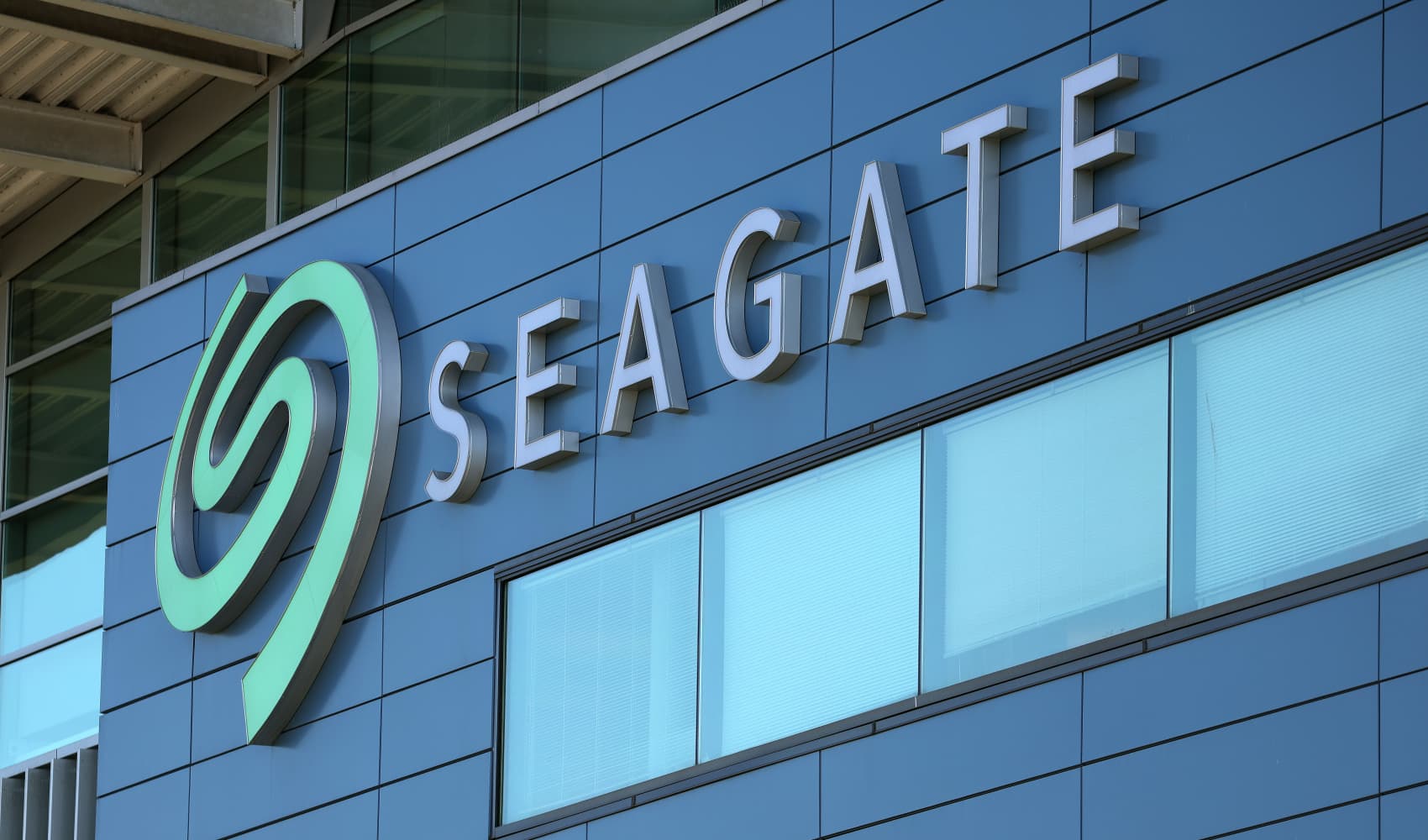Jim Cramer's Optimistic Data Center Outlook: Should You Invest?
Jim Cramer's Data Center Bull Run: Why AI Infrastructure is Still a Buy
Introduction: Is the Data Center Party Over? Cramer Says No Way!
Wall Street can be a fickle beast, can't it? One minute everyone's piling into a hot new trend, the next they're running for the exits like it's a burning building. Right now, some investors are feeling a little uneasy about the data center buildout, especially with all the talk of tariffs, recession, and the seemingly endless demands of artificial intelligence (AI) spending. But hold on a second! According to CNBC's own Jim Cramer, this theme might still have some serious legs. Even with the skepticism surrounding AI infrastructure, Cramer's recent observations suggest a more optimistic outlook.
So, is the data center gravy train slowing down, or is this just a temporary lull before the next big surge? Let's dive into why Jim Cramer remains hopeful and what it could mean for your investment portfolio.
The Wall Street Wobble: Skepticism Around AI Infrastructure
Cramer acknowledges that Wall Street has grown increasingly cautious about AI infrastructure. "When it comes to AI infrastructure, Wall Street's become very skeptical, and I don't think that's really changed," he stated. This skepticism stems from a number of factors, including concerns about the sheer cost of building and maintaining these massive facilities, as well as uncertainty about the long-term returns on investment. Are we overspending on AI? Are we building too much capacity? These are the questions weighing on investors' minds.
Earning Season Insights: A Glimmer of Hope
However, Cramer's optimism is fueled by what he's been seeing this earnings season. "But looking at what we've seen so far this earnings season, I'm feeling much more sanguine about this story, especially if we get some more trade war…de-escalation from the White House and stocks stay as cheap as they are." In other words, the recent financial reports from companies involved in the data center ecosystem are painting a more positive picture than many expected. This suggests that the demand for data center capacity is still strong, and that companies are finding ways to generate profits despite the challenges.
De-escalation of Trade Wars: A Potential Catalyst
The prospect of easing trade tensions is another key factor influencing Cramer's outlook. Trade wars can disrupt global supply chains, increase costs, and create uncertainty in the market. Any signs of de-escalation could provide a significant boost to the data center industry, as it would reduce the risk of tariffs on essential equipment and materials. Think of it like this: a smoother trade environment greases the wheels of progress, allowing data center projects to proceed more efficiently and cost-effectively.
Cheap Stocks: An Opportunity to Buy Low?
Cramer also notes that some data center-related stocks are currently trading at attractive valuations. This presents an opportunity for investors to buy into the sector at a lower price point, potentially reaping significant rewards as the industry continues to grow. It's like buying a house during a market dip – you might have to weather some short-term volatility, but you're setting yourself up for long-term gains.
The Unstoppable Force: Why Data Centers Matter
Let's face it, data centers are the backbone of the modern digital economy. They're the warehouses that house all the servers and networking equipment that power the internet, cloud computing, and, of course, AI. Without data centers, we wouldn't have Netflix, social media, online shopping, or any of the other digital conveniences we take for granted. So, even if Wall Street gets a little skittish from time to time, the underlying demand for data center capacity is likely to remain strong.
AI's Insatiable Appetite: Data Centers as Fuel
And speaking of demand, let's not forget about AI. AI is a data hog, requiring massive amounts of computing power to train and run its algorithms. As AI continues to evolve and become more integrated into our lives, the demand for data centers will only increase. Think of data centers as the fuel that powers the AI engine – without them, the whole thing grinds to a halt.
Beyond AI: The Expanding Universe of Data Needs
While AI is a major driver of data center growth, it's not the only one. Other factors, such as the increasing adoption of cloud computing, the proliferation of internet-of-things (IoT) devices, and the growing volume of digital data, are also contributing to the demand for data center capacity. In other words, the data center industry is not just an AI play; it's a broader play on the growth of the digital economy.
Regional Variations: Where's the Growth Happening?
The data center market isn't monolithic. Growth is happening at different rates in different regions. Emerging markets, in particular, are seeing rapid expansion as they build out their digital infrastructure. Understanding these regional variations can help investors identify the most promising opportunities.
Hyperscale vs. Colocation: Different Models, Different Risks
It's also important to distinguish between hyperscale data centers (owned and operated by companies like Amazon, Google, and Microsoft) and colocation data centers (which rent out space to multiple tenants). Each model has its own set of risks and rewards. Hyperscale data centers tend to be more capital-intensive, but they also offer the potential for greater economies of scale. Colocation data centers, on the other hand, are generally less capital-intensive, but they may face greater competition.
Navigating the Risks: What Investors Need to Watch Out For
Of course, investing in the data center industry is not without its risks. As Cramer pointed out, tariffs and trade wars can create uncertainty. Other risks include rising energy costs, increased competition, and the possibility of technological obsolescence. Investors need to be aware of these risks and do their due diligence before investing.
Power Struggles: The Importance of Energy Efficiency
Data centers consume a lot of electricity, so energy efficiency is a critical factor. Companies that can build and operate data centers in a sustainable way will have a competitive advantage. Keep an eye on innovations in cooling technology and renewable energy sourcing.
The Investment Landscape: Stocks, REITs, and ETFs
There are several ways to invest in the data center industry. You can buy shares of individual companies that build and operate data centers, invest in real estate investment trusts (REITs) that own data center properties, or purchase shares of exchange-traded funds (ETFs) that track the performance of the data center sector.
Beyond the Hype: Looking for Long-Term Value
It's easy to get caught up in the hype surrounding new technologies, but it's important to focus on long-term value. Look for companies that have a proven track record of building and operating data centers efficiently and profitably. Don't chase after short-term gains; instead, focus on finding companies that are well-positioned to benefit from the long-term growth of the digital economy.
The Future is Now: Data Centers as Essential Infrastructure
Ultimately, data centers are becoming an increasingly essential part of our infrastructure, just like roads, bridges, and power grids. As our world becomes more digital, the demand for data center capacity will only continue to grow. While Wall Street may have its doubts from time to time, the underlying trend is clear: data centers are here to stay.
Conclusion: Cramer's Optimism and Your Portfolio
Jim Cramer's continued optimism on data center buildout, despite market skepticism, hinges on positive earnings reports and the potential de-escalation of trade wars. This perspective offers investors a chance to reconsider the sector, particularly if stocks remain attractively priced. The robust demand for data centers, driven by AI and the expanding digital economy, positions this industry for continued growth. While risks exist, focusing on long-term value and sustainable practices can help investors navigate the landscape successfully. So, while Wall Street might be wavering, the fundamental need for data infrastructure suggests a resilient future for the sector.
Frequently Asked Questions (FAQ)
Here are some frequently asked questions about investing in data centers:
- Q: Are data center stocks a good investment in 2024?
A: It depends on your risk tolerance and investment goals. While the sector faces challenges, the long-term growth potential remains strong. Research individual companies and consider diversifying your portfolio.
- Q: What are the main risks of investing in data centers?
A: Key risks include rising energy costs, increased competition, technological obsolescence, and geopolitical factors like trade wars.
- Q: How does AI influence the demand for data centers?
A: AI requires massive computing power, making it a significant driver of data center growth as companies build out infrastructure to support AI applications.
- Q: What is the difference between hyperscale and colocation data centers?
A: Hyperscale data centers are large facilities owned by companies like Amazon and Google, while colocation data centers rent out space to multiple tenants.
- Q: How can I invest in data centers?
A: You can invest in individual stocks of data center companies, REITs that own data center properties, or ETFs that track the data center sector.







